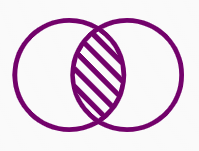You’ll love SEO Analytics and Website Speed Optimization in Tampa, Florida
Contents [hide]
- 1 What’s the best source for Website Speed Optimization?
- 2 Boost Your Tampa Business: How Website Speed Impacts SEO
- 3 More on SEO Analytics…
- 4 Improve Google Maps Ranking » Elevate Your Online Presence: The...
- 5 Google Maps SEO Case Study ~ Unlocking Local Customers: Google...
- 6 NAP Citation Optimization ~ Boost Your Business In Modesto: NAP...
What’s the best source for Website Speed Optimization?
Hey there, Tampa businesses!
We’ve got a friendly reminder that the speed of your website is super important for your SEO. Here’s why:
-
Google loves fast websites: They rank higher in search results. Think about it, would you rather wait ages for a website to load or just click away?
-
Customers prefer fast websites: They don’t like waiting either!
How to check your website speed:
It’s easy! Just hop on over to this tool: [Website Speed Checker]
How to improve your website speed:
There are lots of ways to make your website zip along faster. We’ve got a handy guide to help you out: [Website Speed Improvement Guide]
The bottom line:
If you want your website to do well, make sure it’s lightning-fast. It’s one of the keys to SEO success in Tampa, Florida!
Boost Your Tampa Business: How Website Speed Impacts SEO
TL;DR – Too Long; Didn’t Read
If you’re a business in Tampa, Florida, you need to make sure your website is fast. Google loves fast websites, and they’ll rank you higher in search results if your website loads quickly. This means more people will see your site and potentially become your customers! This article will explain how website speed affects SEO, and show you how to make your website faster.
In today’s digital world, a fast website is essential for any business, especially if you’re in SEO Analytics in Tampa, Florida. Why? Because Google rewards websites that load quickly with higher rankings in search results. This means that your Tampa business website has a better chance of appearing at the top of Google searches, getting more clicks, and attracting new customers.
Website Speed: The Key to SEO Success
Think about it this way: Would you rather wait 5 seconds for a website to load, or would you rather click on another website that loads instantly? Most people would choose the faster option. That’s why Google prioritizes fast websites. They know that people want to find information quickly and easily, and they want to make sure that users have a positive experience.
If your website is slow, it can hurt your SEO in a number of ways:
- Lower Rankings: Google uses website speed as a ranking factor, so a slow website can result in lower rankings in search results.
- Lost Visitors: Visitors are likely to leave your website if it takes too long to load, leading to lost potential customers.
- Reduced Engagement: Slow websites can also lead to reduced user engagement. If it takes forever to load, people are less likely to explore your site, read your content, or make a purchase.
How to Improve Website Speed in Tampa
So, how can you make your website faster and improve your SEO Analytics in Tampa, Florida? Here are some tips:
- Optimize Images: Images can be one of the biggest culprits for slow website loading times. Make sure to compress images before uploading them to your website. Tools like TinyPNG and Optimizilla can help you significantly reduce image file sizes.
- Minimize Plugins: While plugins can add great functionality to your website, they can also slow it down. Only use the plugins you really need, and keep them updated.
- Use a Content Delivery Network (CDN): A CDN can help deliver your website content faster to visitors around the world. Think of it like a network of servers that cache your website content, ensuring it loads quickly for visitors.
A Deeper Dive into Website Speed Optimization
Let’s dive into more detail on specific areas of website speed optimization.
1. Analyze Your Website Speed
The first step to improving website speed is to understand how fast or slow your website is currently. There are a number of free tools available online that can help you analyze your website speed. Here are a few popular options:
- Google PageSpeed Insights: This free tool from Google provides a detailed analysis of your website’s speed, including suggestions for improvement.
- GTmetrix: Another free tool that provides a comprehensive website speed analysis, offering actionable insights and recommendations for improvement.
- Pingdom: This tool offers a detailed website speed analysis, including a breakdown of the different components of your website that are slowing it down.
2. Minimize HTTP Requests
Every element on your website, including images, CSS files, and JavaScript files, requires an HTTP request to be downloaded by your visitor’s browser. The more HTTP requests your website makes, the longer it takes to load.
- Combine CSS and JavaScript files: Instead of having multiple CSS or JavaScript files, combine them into one or two files to reduce the number of HTTP requests.
- Use a CSS preprocessor: CSS preprocessors like Sass and Less allow you to write more efficient CSS code, which can be compiled into a single CSS file.
- Optimize Fonts: Fonts can also add to the number of HTTP requests. Use web fonts that are optimized for loading speed, such as Google Fonts or Adobe Typekit.
3. Optimize Images
We touched on this earlier, but it’s so important it deserves its own section! Images are often the largest files on a website, which can significantly slow down loading times. Here are some strategies for optimizing images:
- Compress Images: Use a free tool like TinyPNG or Optimizilla to compress your images without losing quality.
- Use the right file format: JPEGs are generally best for photos, while PNGs are better for graphics with transparency.
- Optimize Image Dimensions: Make sure your images are the correct size for their intended use on your website. If you have a large image, resize it to a smaller size that’s appropriate for your website.
- Lazy Loading: Lazy loading is a technique that only loads images when they are in the user’s viewport. This means that images that are not visible to the user won’t be loaded, which can help improve loading times.
4. Leverage Browser Caching
Browser caching is a technique that allows your website’s static files (like CSS files, JavaScript files, and images) to be stored on the user’s computer. The next time the user visits your website, the browser will use the cached files instead of downloading them again, which can significantly speed up loading times.
5. Optimize Your Website’s Code
Your website’s code can also affect its speed. Here are some ways to optimize your code:
- Minimize CSS and JavaScript: Remove any unnecessary whitespace and comments from your CSS and JavaScript files.
- Use a CSS preprocessor: CSS preprocessors like Sass and Less can help you write more efficient CSS code.
- Defer Loading of Non-Critical Resources: Defer loading of resources that are not essential for the initial display of your website. For example, you could defer loading of scripts that are used for analytics or advertising.
SEO Analytics in Tampa, Florida: How We Can Help
Whether you’re in Tampa or beyond, we can help you optimize your website speed for SEO success. Our team of experts can help you identify areas for improvement, implement best practices, and monitor your website’s performance over time. Contact us today to learn more about our SEO Analytics and website speed optimization services.
Summary
Website speed is a crucial factor for SEO success, especially for businesses in Tampa, Florida, where competition for online visibility is fierce. By optimizing your website’s speed, you can improve your rankings in search results, attract more visitors, and boost your business’s online presence. We encourage you to take steps to improve your website’s speed today. Don’t let a slow website hold you back!
More on SEO Analytics…
- SEO Analytics
- Search engine analytics
- Google Analytics
- SEO reporting
- Keyword research
- Traffic analysis
- Conversion optimization
- Click-through rate (CTR)
- Bounce rate
- Time on page
- Pageviews
- User behavior analysis
- Website Speed Optimization
- Page speed optimization
- Website performance optimization
- File compression
- Image optimization
- Browser caching
- Content delivery networks (CDNs)
- Lazy loading
- Asynchronous loading
- Minification


